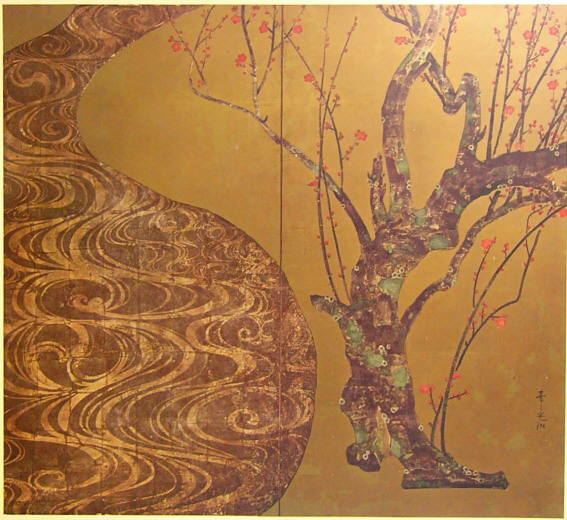Name Ogata Korin | ||
 | ||
Atami moa museum ogata korin
Ogata Korin (尾形光琳, 1658 – June 2, 1716) was a Japanese painter of the Rinpa school.
Contents
- Atami moa museum ogata korin
- Trabalho marcel paro gordo ogata kojin ogata korin
- Early life
- Career
- Selected works
- References
Trabalho marcel paro gordo ogata kojin ogata korin
Early life
Korin was born in Kyoto, to a wealthy merchant who had a taste for the arts and is said to have given his son some elementary instruction therein. Korin also studied under Soken Yamamoto, the Kano school, Tsunenobu and Gukei Sumiyoshi, and was greatly influenced by his predecessors Hon'ami Koetsu and Tawaraya Sotatsu.
Career
Korin broke away from all tradition and developed a very original and distinctive style of his own, both in painting and in the decoration of lacquer. The characteristic of this is a bold impressionism, which is expressed in few and simple highly idealized forms, with an absolute disregard for naturalism and the usual conventions. In lacquer, Korin's use of white metals and of mother-of-pearl is notable; but here he followed Honami Koetsu.
An artist of the Rinpa school, he is particularly known for his gold-foil folding screens. A screen in the Museum of Fine Arts, Boston depicting Matsushima is a particularly famous work, and his "Irises" in the Nezu Museum is a National Treasure of Japan.
Korin died at the age of 59. His chief pupils were Kagei Tatebayashi and Shiko Watanabe, but the present knowledge and appreciation of his work are largely due to the efforts of Sakai Hoitsu, who brought about a revival of Korin's style.
Selected works
In a statistical overview derived from writings by and about Korin, OCLC/WorldCat encompasses roughly 200+ works in 300+ publications in 8 languages and 3,000+ library holdings.
